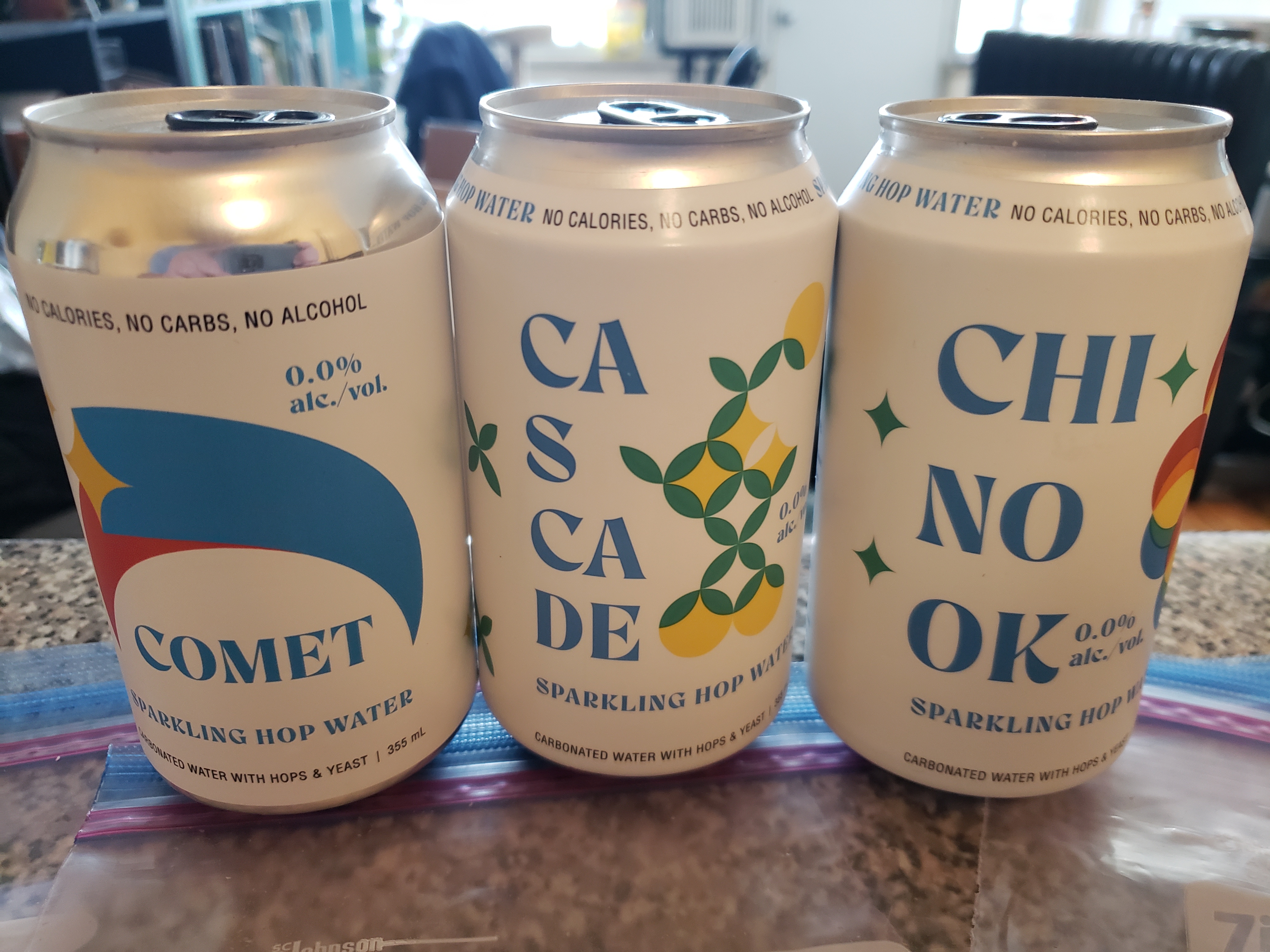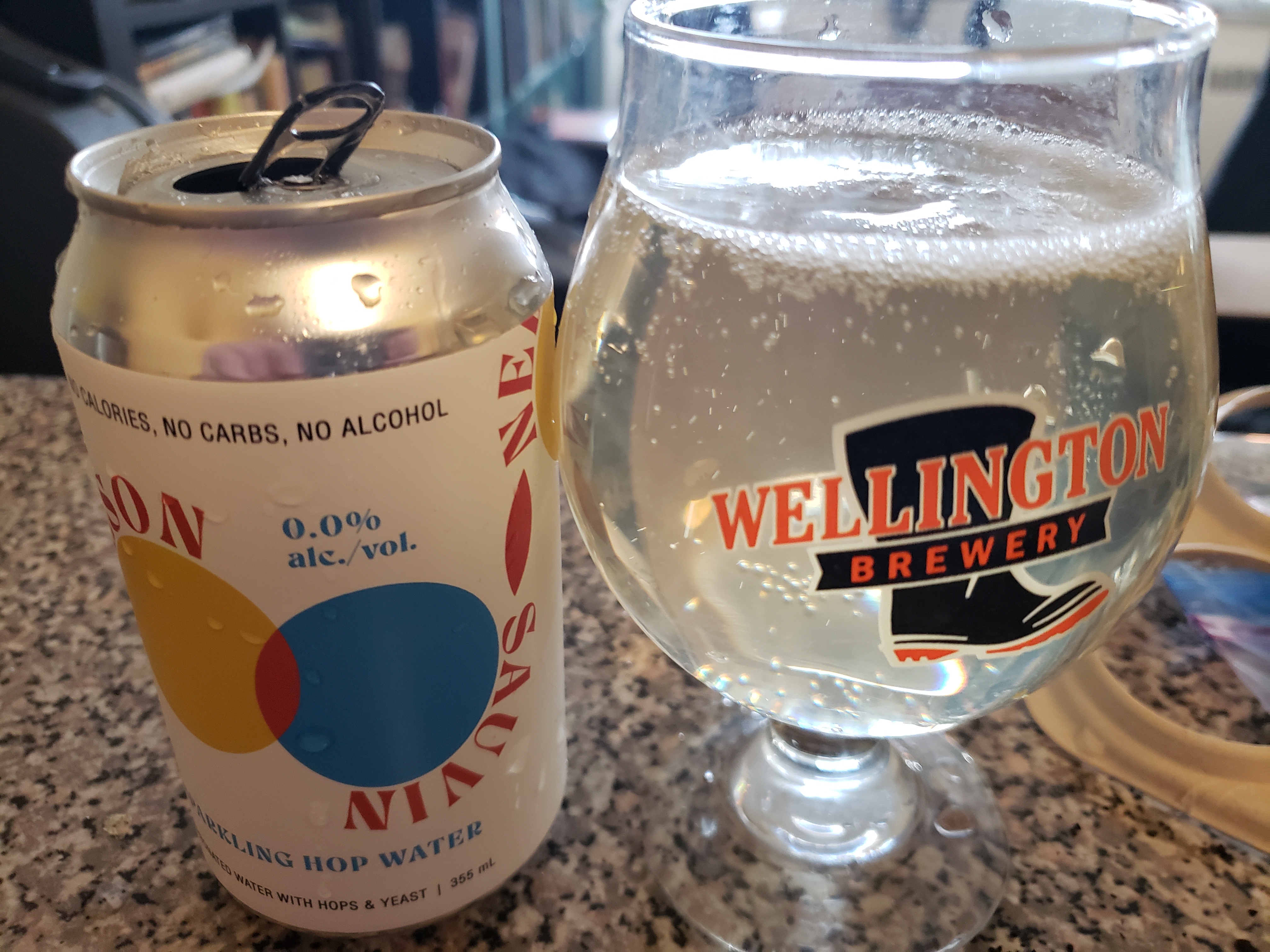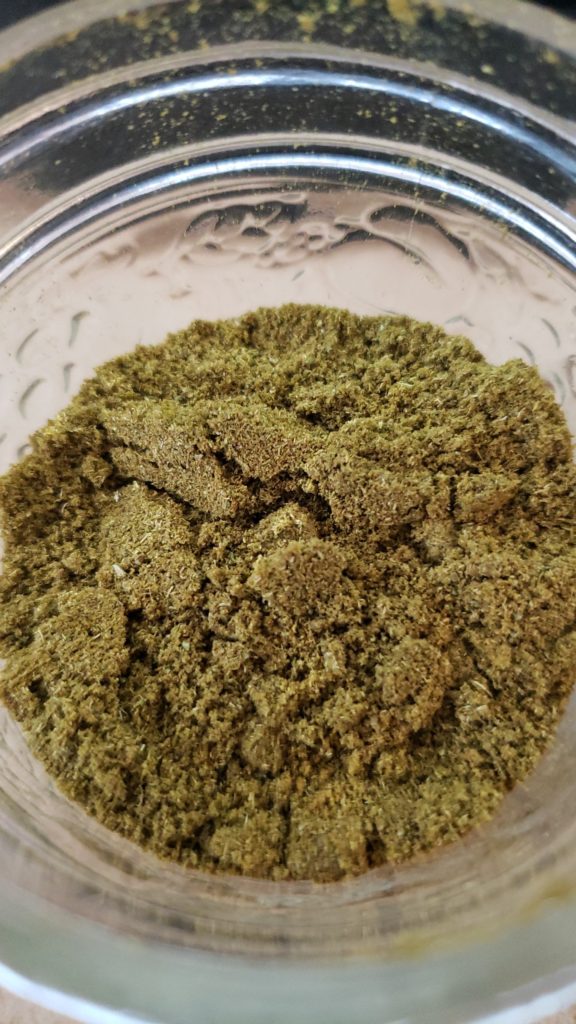Hop Water is better than Non-Alcoholic Beer for a simple reason: Non-Alc Beer is less than the sum of its parts.
As we established last week, Non-Alc beer can just about hit the high points of a style without being sweetened in order to add texture, complexity, and nuance. Whether it’s lactose, maltodextrin, dextrose, or unfermented wort, you’re adding sugar to solve a problem that you’ve created. Best case scenario, you get to about 70% of the flavour profile you’re attempting to emulate. Without the texture of alcohol, without significant ester character, you lose dimensionality.
With Hop Water, you remove the weight of expectation from the equation. Without fermentable material, you don’t have the claim that it’s beer prejudicing you against it. Perhaps more importantly, Hop Water is greater than the sum of its parts: A deceptively simple proposition that transforms its ingredients into a more complex whole.
Ontario’s first Hop Water was Spearhead’s Akwa, which has quickly become something of a sensation around Ontario Beer Twitter. This is partially because it scratches the itch of hop enthusiasts while managing to contain no alcohol and no calories. Its hop profile is contemporary, including Cascade and Citra hops for those bright citrus and floral characteristics HAZY IPA fans have been conditioned to crave over the last decade.

It’s popular enough that Spearhead has a subscription service on their website. You can get a 24 delivered monthly for $30.69 plus shipping. That’s about $1.28 a can, and therefore cheaper than a can of soda at the convenience store.
It’s not the only version. Molson has launched a product called Vyne. It has three flavours, focusing generically on descriptors rather than hop varieties: citrus, floral, and herbal. It’s more expensive at $5.99/4x355ml, and you have to deal with Amazon to order it from them. Aside from the word “hop” on the can, they’ve decided not to bother explaining what a hop might be. That’s because it’s positioned as a lifestyle product in a very non-alc beer sort of way. It is: “Zero calories, sugar free, non-GMO product verified, vegan friendly, natural flavours and gluten free sparkling water.”
These benefits are pretty largely true of any hop water you might choose.
The ones that I’m most interested in currently are Wellington Brewery’s single variety hop waters. As an educator, I’m always interested in tools that are going to get the point across, and since there is a lecture in which I explain the properties of hops alongside the beers that they are used in, the Hop Water might be an interesting interstitial step. When Wellington asked if I would like to receive some samples of their new Hop Water, I suggested they also send a half ounce of the hops they’re using and let me talk to the brewer.
WELLINGTON HOP WATER
Jeff Wilson says that the inspiration for Wellington’s range actually came from Brad McInerney in marketing who showed up one day with a product from Lagunitas called Hoppy Refresher. Since it’s not uncommon for brewers to have a keg of carbonated water on tap, Wellington began to play around with the concept and the Hop Water eventually replaced the carbonated water. At this point it existed largely for internal use. Jeff seemed a little surprised that it has caught on commercially to the extent that it has, acknowledging that the difficulty keeping it on shelves means that they’ve got a hit on their hands.
While he declined to discuss certain aspects of the project to protect the product, I think I’ve got a pretty good handle on how it works, and it bears some explanation.
The first thing to look at is the ingredient list: Water, Hops, Yeast, Citric Acid.
All of these ingredients have a role to perform. The absence of any fermentable material means that there’s no potential for alcohol or carbon dioxide. Fermentation doesn’t take place within Hop Water, meaning that it is always going to be a force carbonated product. Based on the firm can wall, probably closer to soda water than standard lager.
This is important, because the increased carbonation is going to push volatile aromas towards you. Those volatiles? Well, they depend on the individual hop varietal, and in the case of the Cascade, Comet, and Chinook varieties, you’re dealing with Ontario grown versions from Scott Hayhoe over at Hayhoe Hops. It’s worth noting that the Ontario terroir is going to be vastly different than the Yakima terroir, so the typical radar charts are going to change a little depending on that variable.


The building blocks of aroma and flavour are finite and it’s the combination of them that makes up all of the smells on the planet. Why does Cascade smell like Grapefruit? Nerol, Geraniol, Linalool. Terpenes that also exist in Grapefruit. The shift in the last decade to cold side hop additions, or dry hopping, has been entirely in aid of showcasing these delicate volatile aromas. Bitterness is, comparatively speaking, really easy. You calculate how bitter you want it and bung the hops in at the beginning of the boil. It’s about presence, not nuance.
Cold side additions are hard, and this brings us to yeast. Hops undergo biotransformation in the presence of yeast. While the science isn’t completely understood, Eugene Fletcher over at Escarpment has a good piece on it. This isn’t really fermentation, it’s a fundamental molecular change that more or less enhances terpenes. Geraniol (smells like geraniums) evolves into Citronellol (smells like citrus). It’s super effective. Further, different strains result in different intensities once the process is complete. The process seems to have a tendency to dry out sweeter aromas.
You might be looking at that citric acid and wondering what to make of it. Well, your standard pint of lager is usually around 4.5 on the pH scale, so in order for the Hop Water to make sense contextually, it helps if it’s a little acidic. Carbonated water is acidic to begin with because of the carbonic acid, but citric acid gives it a little character. It reinforces the flavour profile of the citrus that the biotransformation is pulling out of the hops.

This brings me to the newest version: Nelson Sauvin. There’s a brilliant paper on the effect of biotransformation on Nelson Sauvin, although I’m not sure that the authors thought about it that way at the time of writing. Nelson Sauvin is a different beast, higher in humulene and therefore a different flavour profile. It’s a cross breed of a New Zealand Smooth Cone, and the comparison is Pacifica (a transplanted Hallertau). Instead of being the result of a breeding program in the Pacific Northwest, it’s from Sauvignon Blanc country so you get gooseberry, white grape, and sometimes a little delicate pome fruit character.
In addition to biotransformation taking place, Jeff has done something very clever. He switched out the citric acid for tartaric acid, which is commonly found in cold climate white wines and which sometimes results in wine crystals in things like Riesling. In short, he’s punching up the grape character.


Here you have a tool that allows brewers to understand biotransformation in individual hop varieties, which turns around quickly, which has a low cost to produce, and which is flying off the shelves. Drinkers have been conditioned to want cold side hop additions since about Sierra Nevada Torpedo, and here it is in its purest form. All of the aroma and complexity without anything to distract from it. Hop Water is the end of the rainbow from the perspective of the 50 year ingredient boom that we’ve been in since the USDA released Cascade in 1972.
If you’d like to see the tasting exercise I’ve done for Chinook and Nelson Sauvin, you can click on them here.
